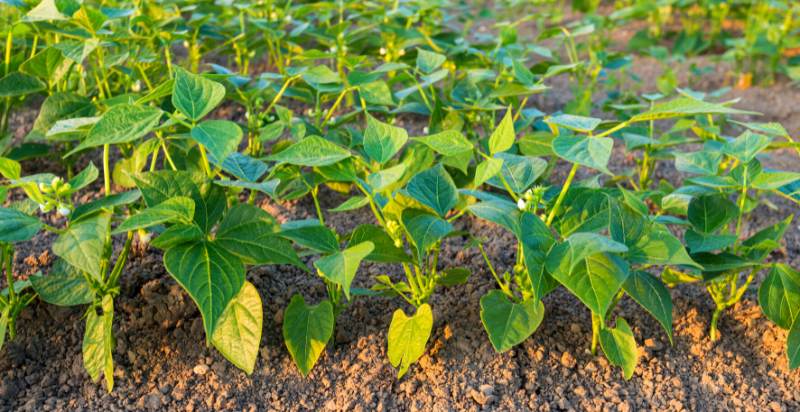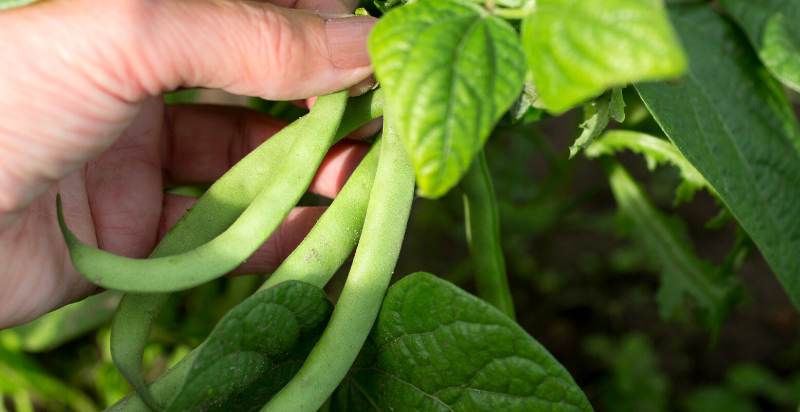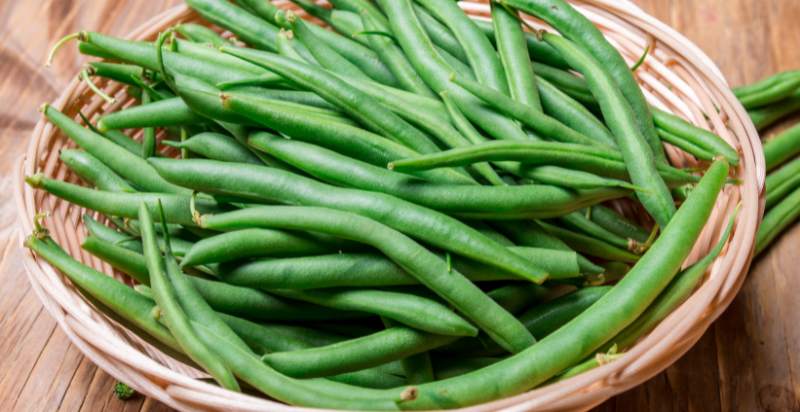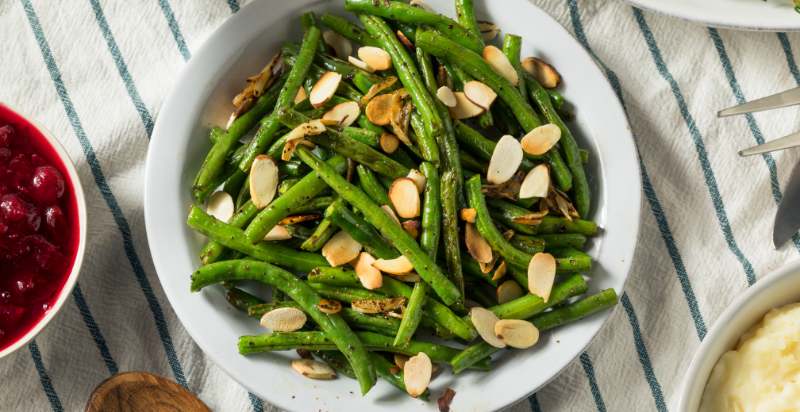Green beans are a healthy and delicious vegetable that can be prepared in many different ways. From steaming to sautéing, there are many ways to enjoy this nutritious vegetable. Green beans are a good source of dietary fiber, vitamins A and C, iron, and calcium. They are low in calories and fat but high in nutrients. In addition to being tasty and nutritious, green beans are also very versatile; they can be used in various dishes, making them a great choice for any meal.
Green beans can fit the bill whether you’re looking for a side dish or an entree. Read on to discover more about these nutrient-packed vegetables, including their nutritional benefits, different types and varieties, and easy preparation tips.
What are Green Beans?
Green beans, also known as string beans or snap beans, are a type of legume. They are the immature form of common beans and come in various shapes and sizes. Green beans have thin, edible pods and small seeds inside. The green color comes from chlorophyll, which is responsible for photosynthesis in plants.
Green beans are a popular vegetable worldwide and are widely eaten as a side dish in soups, salads, and stir-fries.
History and Origin of Green Beans:
Green beans have been cultivated since ancient times. They were a common crop in the Middle East, North Africa, and Europe during the Roman Empire. The first green beans brought to North America arrived with European settlers in the early 1600s. Since then, they have become a staple vegetable in many cultures worldwide.
Types of Green Beans:
There are many different types of green beans. The most common varieties include:
- Snap Beans- These are the most widely available green bean. They have thin, edible pods and small seeds inside. This variety is harvested when fully mature but before the pod becomes tough and fibrous.
- Wax Beans- These beans have a yellow-green color and are harvested when they are young. They have a milder flavor than snap beans.
- French or Haricot Verts- These beans are thinner and more delicate than other green beans. They are usually pale green and have an intense, sweet flavor.
- Runner Beans- This variety is grown for its robust, edible pods rather than its seeds. Runner beans have a thick skin that must be carefully removed before eating.
- Italian Flat Bean- Also known as Romano or Italian Pole bean, this variety has wide, flat pods with small seeds. The flavor is nutty and slightly sweet.
Nutritional Benefits of Green Beans:
Green beans are an excellent source of dietary fiber, vitamins A and C, iron, and calcium. They are also a good source of protein, magnesium, potassium, folate, and vitamin K. Green beans contain phytonutrients that can help protect the body against chronic diseases.
Green beans are low in calories and fat but high in nutrients, making them ideal for those looking to lose or maintain weight. They are filling yet still light enough to fit into any meal plan.
Green beans are also a good source of dietary fiber, which is important for digestive health. Fiber helps to keep the digestive tract clear and can help reduce cholesterol levels.
What Benefits of Green Beans?
Green beans have many benefits for your health. They are an excellent source of vitamins, minerals, and other nutrients that can help keep you healthy. Additionally, green beans are low in calories and fat but high in dietary fiber, making them a great choice for losing or maintaining weight.
Green beans also contain phytonutrients that can help protect the body from chronic diseases such as cancer and heart disease. The antioxidants in green beans may also help improve skin health by protecting it from free radical damage caused by environmental stressors like pollution and UV rays.
Finally, green beans are a good source of dietary fiber, which is important for digestive health. Fiber helps to keep the digestive tract clear and can help reduce cholesterol levels.
By incorporating green beans into your diet, you can reap their many health benefits and enjoy their delicious flavor.
How to Plant Green Beans?
Green beans are an easy-to-grow and delicious vegetable that can be planted in spring, summer, or even fall. They provide a tasty addition to salads, stir-fries, and side dishes. Green beans are also snap beans, string beans, or pole beans. Planting green beans correctly will give you a good harvest of crunchy vegetables throughout the growing season.
Location
When choosing where to plant your green bean plants, it’s important to know what plants you have: bush or pole varieties. Bush beans take up less room but produce fewer vines on shorter stems. Pole varieties require stakes or trellises for support because they grow tall and produce more pods than bush types. Both green beans should be planted in full sun for the best yields.
Soil Preparation
Green beans need well-drained soil with plenty of organic matter and a pH between 6.0 and 6.5 to thrive. To prepare the soil, rake it thoroughly to remove any weeds or debris, then spread 2-3 inches of compost over the area. Work the compost into the top 8-10 inches of soil with a shovel or hoe before planting. You can also fertilize your green bean plants by mixing 1 pound of 10-10-10 fertilizer per 100 square feet into the soil.
Planting
When planting your bush green beans, space them 4-6 inches apart in rows 18-24 inches apart. Plant your pole beans 6-8 inches apart and provides them with a trellis or stake for support. Place the green bean seeds 1 inch deep in the soil, then water them thoroughly. Bush varieties usually produce their first crop of beans within 50 days, while pole varieties take about 60-70 days before they’re ready to harvest.

Care & Maintenance
Once you’ve planted your green bean plants, keeping them well watered during the growing season is important. Watering should be done at least once a week, ensuring that each plant receives at least 1 inch of water per week. Mulching around the plants is also recommended to help retain moisture and reduce weed growth. When it’s time to harvest, pick your green beans often to encourage more production.
Harvesting
When harvesting your green beans, you can pick them when they’re small for the best flavor. Aim for beans that are 1-2 inches in length for the best flavor and texture. Check plants every few days during peak season for new pods, as some varieties will produce abundant harvests over a short period. Remove any old or overripe pods from the plant to ensure continuous production before picking new ones.
You can enjoy fresh green beans throughout the growing season with proper planting and care. Adding these delicious veggies to your garden is a great way to get in your daily servings of vegetables without going to the store. With some patience and determination, you’ll be enjoying fresh green beans in no time.
How to Care for Green Bean Plants?
Once your green bean plants are established, they will require minimal maintenance. It would be best if you watered the plants at least once a week during dry spells, ensuring that each plant receives 1 inch of water per week. Mulch around the plants is also recommended to help retain moisture and reduce weed growth. Fertilizing can help promote healthy growth as well; use a 10-10-10 fertilizer at planting time, then once every two weeks after that.
When it comes to weeds, pull them by hand or hoe them gently when necessary — never use herbicides on your green beans! Check your green bean plants for pests such as aphids, spider mites, or beetles during the peak season. If you spot any of these pests, remove them with water or insecticidal soap.
When it’s time to harvest your green beans, pick them often for the best flavor and texture — aim for beans that are 1-2 inches in length for the best results. Removing old or overripe pods from the plant will help encourage new production. With patience and knowledge, you can enjoy fresh green beans from your garden all season long.

Preventions from Pests and Diseases:
To prevent pests and diseases from affecting your green beans, it’s important to practice good garden hygiene. This includes rotating crops, avoiding overcrowding, keeping weeds away, and removing dead or diseased plants. Planting disease-resistant varieties of green beans can also help reduce the risk of disease.
In addition to these preventive measures, you can also use insecticidal soaps or organic pesticides to eliminate any pesky bugs on your plants. Remove the affected plant immediately if you notice any disease, such as wilting leaves or spots on the foliage and pods. It would be best if you also disposed of all debris at the end of the season to ensure that you don’t carry over any fungal spores into the next planting season.
You can enjoy a successful harvest of green beans each year with proper preventive measures and care. With some patience and knowledge, you’ll be able to plant and maintain your green bean plants easily.
How to Harvest Green Beans?
When it’s time to harvest your green beans, pick them often for the best flavor and texture. Aim for beans that are 1-2 inches in length for the best results. Removing old or overripe pods from the plant will help encourage new production. With patience and knowledge, you can enjoy fresh green beans from your garden all season long.

Storage
Once harvested, green beans should be stored in a cool and dark place as soon as possible to preserve their freshness. To keep them crisp, store them in an airtight container or plastic bag in the refrigerator; they should last up to a week when stored properly. You can also freeze green beans by blanching them and packing them in freezer-safe bags. Frozen green beans will keep for up to six months when stored correctly.
Following these simple steps, you can enjoy fresh green beans all season long! With some patience and knowledge, you’ll be able to plant and maintain your green bean plants easily. Now that you know how to care for your garden green beans, it’s time to get out there and start planting.

How to Use Green Beans?
Green beans can be used in various ways to create delicious dishes. Here are some ideas:
- Roast them: Slice the beans into 1-inch pieces and toss with olive oil, salt, and pepper before baking on a sheet tray for 15-20 minutes at 400°F.
- Sauté them: Heat some oil in a skillet and add diced onions, garlic, and other vegetables. Add the green beans and sauté until they are tender-crisp.
- Steam them: Put the green beans in a steamer basket over boiling water or place them directly into boiling water for 2-3 minutes until they turn bright green.
- Stir-fry them: Toss-prepped green beans with garlic, ginger, soy sauce, sesame oil, and optional red pepper flakes or other seasonings. Heat a wok or large skillet over high heat, then add the mixture to it and stir-fry for about 5 minutes until cooked through but still crisp.
- Grill them: For a charred flavor, grill the green beans over medium-high heat for about 4 minutes, tossing them occasionally.
- Pickle them: Slice the beans into 1/4-inch pieces and put them into a jar with vinegar, salt, sugar, garlic cloves, and a few peppercorns. Keep in the fridge for up to two weeks.
They are sure to please you no matter how you prepare your green beans.

Potential Risks from Green Beans:
Green beans are generally safe and healthy, but some people may be sensitive to them. People with allergies to legumes such as peanuts, soybeans, or other beans should avoid green beans. Additionally, green beans are low in oxalates which can cause kidney stones for those prone to developing them.
It is also important to cook green beans thoroughly, as raw or undercooked beans can contain toxic compounds that can make people sick. Finally, if you buy canned green beans, ensure they are BPA-free or non-toxic. With these potential preventive measures, you can enjoy the nutritional benefits of eating green beans without harm.
Conclusion:
Green beans are a nutritious addition to any diet and can be cooked in many different ways. You can enjoy fresh green beans throughout the summer months with proper care and harvesting practices. If done correctly, they will provide vitamins, minerals, and fiber while remaining low in calories. Follow these steps to safely incorporate green beans into your diet and reap all its benefits!
By following these simple tips, you, too, can have a successful harvest of green beans each year with proper preventive measures and care. Enjoy fresh green beans from your garden all season long! Now that you know how to care for your garden green beans, it’s time to get out there and start planting.
- Green Beans: Plant, Grow, and Harvest Pole and Bush Beans - October 27, 2023

7 thoughts on “Green Beans: Plant, Grow, and Harvest Pole and Bush Beans”
Comments are closed.